#Audio Fidelity Records
Explore tagged Tumblr posts
Audio
Gershon Kingsley, Jackdancer "Pop Corn" ("Popcore" remix) Music to Moog By (1969, 1999) Audio Fidelity Records
#music#tracked music#module music#Gershon Kingsley#Pop Corn#Music to Moog By#1969#Audio Fidelity Records#remix#ProTracker#MOD#Jackdancer#Popcore#1999#synth-pop music#electronic music
4 notes
·
View notes
Text
Honey Bane, Girl On The Run high fidelity rip from the You Can Be You 12" Crass Records re-issue (1979/2022).
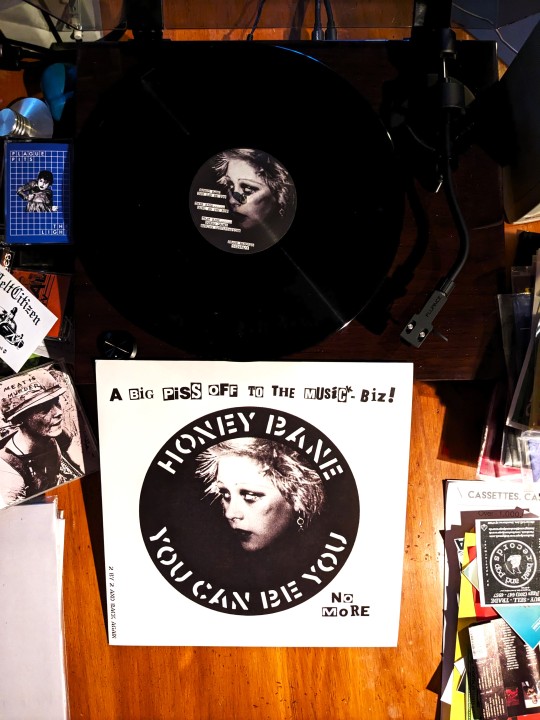

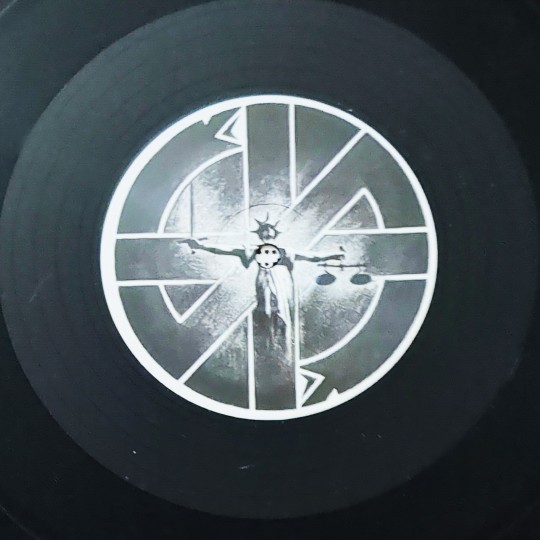



#honey bane#girl on the run#you can be you#donna tracie boylan#pete wrong#arthur-penny rimbaud#phil dat#fingers tarbuk#p.a. nana#crass punk#crass records#vinyl records#vinyl albums#punk records#record collection#album collection#vinyl collection#vinyl rip#high fidelity#audio post#london
21 notes
·
View notes
Text
Full sonic capture, or euphony? And why.
Audio engineer Ben Duncan’s book High Performance Audio Power Amplifiers for music performance and reproduction (1996, Newnes) is unusual for its “interleaving of electronics and audio, engineering ideality, and musical and practical reality”. He points out that the ideal intention of hi-fi audio is to capture, and reproduce at any time, the captured sound with greatest accuracy. Alternative to…

View On WordPress
#active listening#audiophilia#engagement#fidelity#hi-fi#Hi-fi audio#high fidelity#listening#music listening experience#psychoacoustics#recording reproduction#sound quality#well-being
0 notes
Text
Alex North & Cinerama Orchestra: South Seas Adventure (1958)



Audio Fidelity Inc.
#my vinyl playlist#alex north#cinerama orchestra#cinerama#audio fidelity inc#movie soundtrack#movie score#folk music#world music#1950’s music#pacific islander music#record cover#album cover#album art#vinyl records
1 note
·
View note
Text
We're seeing major advancements in tech that can decode brain signals, interpreting neural activity to reveal what's on someone's mind, what they want to say, or – in the case of a new study – which song they're listening to. US researchers have been able to reconstruct a "recognizable version" of a Pink Floyd song based on the pulses of activity moving through a specific part of the brain's temporal lobe in volunteers as they listened to the hit Another Brick in the Wall Part 1. While the tune in question did go through some initial processing into a spectrogram form to be more compatible with the brain's audio processing techniques, the reverse process is impressive in terms of its fidelity. "We reconstructed the classic Pink Floyd song Another Brick in the Wall from direct human cortical recordings, providing insights into the neural bases of music perception and into future brain decoding applications," says neuroscientist Ludovic Bellier from the University of California, Berkeley.
Continue Reading.
148 notes
·
View notes
Text
Cooking à la replicator
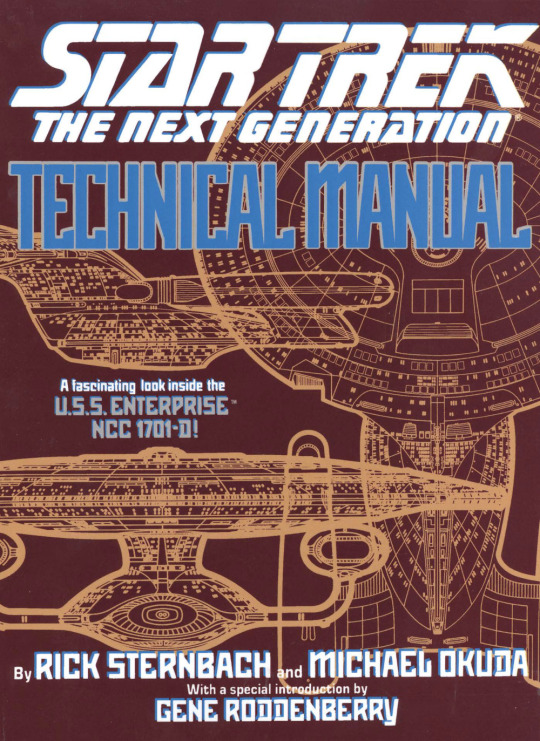
Chapter 7.6 of the semi-canonical STAR TREK: THE NEXT GENERATION TECHNICAL MANUAL by Rick Sternbach and Michael Okuda includes a description of how the replicators work that offers some interesting background for how people in the TNG era might approach food and cooking in the era of replication technology.
The first and most important point is that the molecular patterns replicators use to recreate objects are a form of compressed storage, akin to a compressed audio or image file. The text explains:
Because of the massive amount of computer memory required to store even the simplest object, it is impossible to record each molecule individually. Instead, extensive data compression and averaging techniques are used. Such techniques reduce memory storage required for the molecular patterns by factors approaching 2.7 x 10^9. The resulting single-bit inaccuracies do not significantly impact the quality of most reproduced objects, but preclude the use of replicator technology to re-create living objects. … The data themselves are subject to significant accuracy limits.
So, a replicator pattern is an approximation of the original object, just as a JPEG image scanned from a 35mm negative is only an approximation of the original negative. Data compression issues also mean that there are tradeoffs between imaging fidelity, memory storage requirements, and the power required for replication. The text notes:
There are two main replication systems on board the Enterprise. These are the food synthesizers and the hardware replicators. The food replicators are optimized for a finer degree of resolution because of the necessity of accurately replicating the chemical composition of foodstuffs. Hardware replicators, on the other hand, are generally tuned to a lower resolution for greater energy efficiency and lower memory matrix requirements. A number of specially modified food replication terminals are used in sickbay and in various science labs for synthesis of certain pharmaceuticals and other scientific supplies.
The chapter doesn't specifically discuss how these things impact food and food preparation, but there's enough information to infer a number of additional points:
There is a quantifiable difference between replicated and non-replicated food, and probably a qualitative one as well. A fresh apple is not identical to a replicated copy of that apple, so we can surmise that beings with sufficiently sensitive palates could probably tell the difference. Furthermore, a fair number of people would probably insist that they could tell the difference, whether they actually could or not!
The range of foods that can be replicated has significant practical limits. In order to replicate something, you need either a preexisting molecular pattern or an extant example you can scan. Furthermore, because each pattern is resource-intensive to store, a given system can really only retain a finite number of patterns. So, for rare, exotic, or unusual foodstuffs, no molecular pattern may be available, and finding a molecularly scannable example might be difficult.
Because of the "single-bit inaccuracies," generation loss is likely an issue, so replicating replicated food will produce a qualitatively worse result (although each first-generation replicated copy of the same pattern is theoretically identical).
The difference in replicator resolution probably has many gradations. For instance, a food replicator included in a shuttlecraft survival kit might be tuned for the lowest resolution that's still safe for foodstuff preparation, to conserve power, while replicators used for synthesizing pharmaceuticals in sickbay might have somewhat higher resolution than the ones in the mess hall.
So, what does this mean for TNG-era cooks like Benjamin Sisko and his dad? Some guesses:
Chefs might use specialized ultra-high-resolution replicators, either ones specifically designed for culinary use or repurposed ultra-high-res replicators from some other application (like a pharmaceutical replicator), to produce higher-quality replicated foodstuffs.
Cooks and bakers may prefer to replicate raw materials and then prepare them the old-fashioned way. For instance, it would probably make more sense for a baker to have replication patterns for different kinds of flour, eggs, sugar, etc. than to try to image and store complete breads and cakes, since the same ingredients could be used to create many different finished products.
People undoubtedly still cook with non-replicated ingredients where they can get them, and probably routinely combine replicated and non-replicated ingredients. An apple pie made with fresh-picked apples and replicated flour and sugar is probably still better than a wholly replicated pie.
There might be a whole genre of cookbooks focused on cooking with replicated food, aimed specifically at working around the impact of resolution-related "single-bit inaccuracies" on how food tastes.
People probably have strong opinions about the impact of replication, such as which foods or drinks can't be satisfactorily replicated, and the pros and cons of different replicated and non-replicated foodstuffs.
People on starships probably occasionally try to make food or beverages with the sickbay replicators, insisting that it tastes better that way.
#star trek#star trek the next generation#rick sternbach#michael okuda#pseudoscientific gobbledygook#star trek deep space nine#benjamin sisko#there WOULD be extensive discussions#about how or whether replicated food could be kosher or halal#except that star trek is explicitly antisemitic and islamophobic#and discovery asserts that islam and judaism were exterminated in the 21st century
37 notes
·
View notes
Text
youtube
Horizon Zero Dawn Remastered - Announce Trailer
Horizon Zero Dawn Remastered will launch for PlayStation 5 and PC (Steam, Epic Games Store) on October 31, 2024 for $49.99. Existing owners of Horizon Zero Dawn can upgrade to Horizon Zero Dawn Remastered for $9.99.
First details
Over seven years ago, we released Horizon Zero Dawn into the wilds. Players got to meet Aloy, our leading hero, thrust into a journey of (self-)discovery in a mysterious, far-future world ravaged by deadly machines.
It was also the beginning of a thriving community of cosplayers, virtual photographers, fan artists, and content creators who inspire us to this day with their incredible creations. Horizon Zero Dawn is near and dear to many fans, as well as to everyone at Guerrilla.
And that community has not stopped growing. Each year, many millions more pick up Horizon Zero Dawn for the first time. But seven years is a long time in the world of computer graphics; technology improves. As time moved on, we really wished that new players who join Aloy on her origin story can do it with a version that is worthy of their PS5 or compatible PC. And so, we are thrilled to announce that the game has been remastered by our talented friends at Nixxes.
Horizon Zero Dawn Remastered launches on October 31. The captivating story and awe-inspiring post-apocalyptic world returns alongside a host of technological improvements, visual enhancements, and upgraded features. It also includes The Frozen Wilds content, a vast expansion featuring additional lands, skills, weapons, and machines. Take a look at the announcement trailer below.
Horizon Zero Dawn Remastered features over 10 hours of re-recorded conversation, mocap and countless graphical improvements that bring the game to the same visual fidelity as its critically acclaimed sequel Horizon Forbidden West. The game’s lush world includes frozen mountains, dense jungles, and arid deserts with stunning new visuals and 4K graphics and travelling between settlements is now lightning-fast.
The story’s many compelling characters have been upgraded, bringing them in line with current generation advances in character models and rendering. We hope that improved animation, lightning, textures and more will make new and existing fans excited to dive into the action!
The audio experience in Horizon Zero Dawn Remastered has been significantly enhanced. We’ve completely revamped the sound mix, now supporting PlayStation 5 Tempest 3D Audio Tech for higher-order ambisonics and Atmos rendering for an immersive soundscape. Our sound design has also seen major improvements, with hundreds of improvements both in-game and in the cinematics.
Horizon Zero Dawn Remastered takes full advantage of the PlayStation 5 console’s power and features. The DualSense controller’s haptic feedback and adaptive triggers ensure incredible immersion during tense combat, stealthy exploration, or scaling a gigantic Tallneck. We’ve integrated custom haptics for the DualSense controller throughout the game, providing tactile feedback that heightens immersion. Additionally, we’ve introduced a new optional accessibility feature that utilizes sound and haptic feedback to notify players of interactable elements, such as pickups, that were previously only indicated visually.
We’re also very happy to share that Horizon Zero Dawn Remastered comes with native support for PlayStation 5 Pro. This includes a range of graphical features that have been improved to make use of the power of the PlayStation 5 Pro, while also delivering ultra-high fidelity at blazing fast framerates.
The PC version on Windows includes the PlayStation overlay with Trophy support and has its own set of features, such as support for ultra-wide resolutions and the latest performance enhancing technologies like NVIDIA DLSS 3 and AMD FSR 3.1 with frame generation. We will let our Nixxes partners expand more in a future blog.
Many of the accessibility features that were first introduced in Horizon Forbidden West have been included for this Remastered version as well; remappable controls, haptic cues, and various assist toggles will enable all players to fully enjoy the game.
For those that have already played it, we’ve made sure that your old save games will work; so this is a great opportunity to dive into New Game+ or get back into Photo Mode with all your previously unlocked outfits and customizations.
We’re excited to share that pre-orders for Horizon Zero Dawn Remastered will open on October 3 for both platforms.
For existing owners of Horizon Zero Dawn (PlayStation 4, PC) and/or Horizon Zero Dawn Complete Edition (PS4, PS5, PC): you can upgrade to the digital version of Horizon Zero Dawn Remastered for $9.99 on both PlayStation 5 console and on PC (via Steam or Epic Game Store). This includes fans who added the game to their libraries during PlayStation’s Play At Home initiative.
Owners of the Horizon Zero Dawn PlayStation 4 game disc can access this offer by inserting the game disc into their PlayStation 5 console (and will need to keep the disc inserted each time to play the game). PlayStation 4 game disc owners who buy the PlayStation 5 Digital Edition disc-free console will not be able to access the upgrade offer.
For new fans, the game can be purchased for $49.99 on PlayStation Store, Steam, or Epic Game Store. You will receive the Horizon Zero Dawn Complete Edition.
#Horizon Zero Dawn Remastered#Horizon Zero Dawn#Horizon#Horizon game#Guerrilla Games#Sony Interactive Entertainment#PS5#PC#State of Play#State of Play September 2024
8 notes
·
View notes
Text

Louie And The Dukes Of Dixieland Audio Fidelity Records/USA (1960)
48 notes
·
View notes
Text
recorded by taiyu shiiba in march and april 1995, released on cassette the same year. the impress of style in shiiba's cutesy pop composition, warm ensconcing thickness of audio effects and recording fidelity, bijou dewdrop synthesizer melody and drum machine programming are lacquered with the late eighties indie pop underground plexus of regional scenes/connective loci of social activity and the vascular interior/exterior flow of vision into sounds that would continue to favor the cassette, alongside discs of lesser letter mail mobility, as a central object of creative transmission and organization throughout the early nineties, a near past likeness/lifeness that entices the descriptive subjection of its firsthand electricity, winding the referential primacy of distribution networks over fables of inception, to the auralization of an aesthetic unity that maybe defuses the sublime odors of its reeled spirit.
#taiyu shiiba#audio#headache chocolate/moment's remedy for the troubled girl#the same thematic summerworld of yuichiro nakada#primary colors on toys and vintage pyrex suggest a staged progression in access to color#we are taken through the ages of light
22 notes
·
View notes
Text
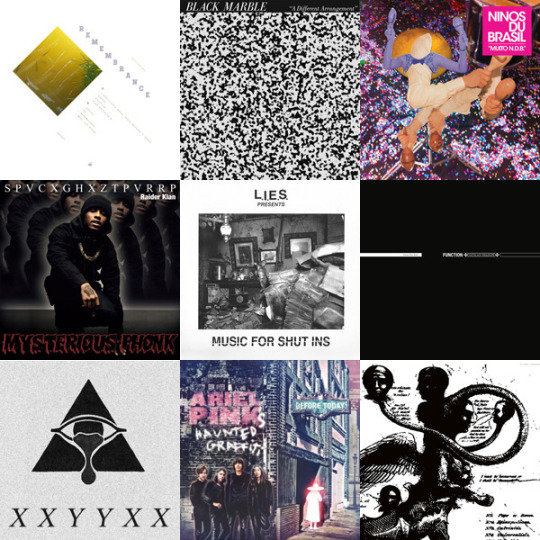
Lindenhurst.
I lived in Brentwood for much of my timeline; mostly at my childhood home and later moved down the road not too far away post-Stony Brook. The latter move was a result of me refusing to move down to Myrtle Beach with my parents. I never had any desire to leave New York State and I never had enough of visiting New York City. Around the time, the economy plundered. I went broke and applied for the first job opportunity that was open in order to survive. I had no idea that place would ruin me. For most of the time at the second Brentwood residency, I wasn’t feeling 100% because of constant targeting of management and their crony co-workers. It took me a while to get back on track and eventually whatever I lost I gained back and more. I discovered a few key artists that made me see the light. I got back into broadcasting with a new radio show, and I finally re-united with Cath- whom I haven’t seen in a few years due to her addiction and sordid history.
But, some things turn sour that’s not your fault. Ma’ commits suicide and your dad ends up moving back in with you. You end up working two jobs without a day-off in near vicinity. Cath-’s #1 dies of a heroin overdose and she cuts off all ties from you with absolutely no reason given. Your unemployed gamer landlord doesn’t put in his fair share of rent and utilities, so you end up with no internet and you’re literally freezing because there’s no running heat or hot water for all of winter. Of all the major events going on, that final one had my bro- take notice. He was living with his lady and their first-born in Lindenhurst. He felt so bad learning I was living with no utilities that he not only offered me to move in with him to Lindenhurst but also into a new house. I shouldn’t say ‘offered’. He told me so. Sure. I wasn’t complaining.
I had about a week to pack up all the loose ends and was told to take out all my records, discs, cassettes, VHS tapes, and DVDs from the drawers and throw them in giant bins. Him and his friends managed to lift all the furniture up out of the old Brentwood residency and into the new one in Lindenhurst. It was my duty to take some of the smaller boxes of personals to stuff in the trunk, back seat, and passengers’ seat of my car.
I’d be leaving behind the un-mopped dingy floors, the eventual basement floods, and the other disused soot-ridden rooms which the former random inhabitants lived in. One ‘neighbor’ who lived in the adjacent room from me came home on the weekends totally wasted that he collapsed face first on the floor as soon as he walked in. He almost caused a house fire by forgetting the bag of popcorn he was cooking in the microwave. And the best one – get ready for this - was when a fully nude lady almost walked into my room. It was his prostitute looking for him. Jesus Fucking Christ.
I went to work and was told by my bro- that everything would be moved in the same day, so just come to the new house in Lindenhurst. I had no idea how good I had it. My new room was up on the second floor and triple the size of my previous one. Carpeted floors. Windows that faced the peeking sun. Low-flying passenger jets. A wider, larger closet space, and a pair of smaller doors revealing an attic for storage. Plus, being in Lindenhurst meant that three record stores were in near vicinity: West Babylon’s Looney Tunes, Amityville’s High Fidelity, and Massapequa’s Infinity Records. Lindenhurst had quickly become a favorite place to live in.
I arrived from work on a sunny 70* Sunday. June 1st to be exact. Most of what I kept from my childhood home and the previous residency came with me to Lindenhurst such as a gumball machine, my gramma’s Lafayette LR-810 receiver, and a massive Philips 24” CRT TV that would paralyze anyone attempting to lift it. All of it was there and a few boxes of my audio / video library. I wasn’t interested in unpacking. Not just yet. Our wi-fi network was set-up. That was the most important thing to me. I haven’t had consistent wi-fi in six months. The first thing I looked up was to see how Cath- was doing despite her taking everything we had and throwing out the trash as if it was nothing. Good news: she’s started a new life solo in Arizona and has been clean for one month.
The first finds to mark my new stay in Lindenhurst? Someone had posted Pharmakon’s “Xia Xinfeng” where her murderous screams break through a fully-running frigidly cold hum. I was sold instantly. The vinyl-finds groups lead me to Mass Production and Peter Brown; soul-jazz and pop respectively. I stuck with the L.I.E.S. label after fully enjoying Ron Morelli’s solos for a quite a while, all released through Dominick Fernow’s Hospital Productions. His label compilation, Music For Shut-Ins, supplied Samantha’s Vacation, Svengalisghost, and Legowelt. Omar Souleyman started gaining a name for himself in the states. Experiencing “Kell Il Banat Inkhatban (All The Girls Are Engaged)“ is truly something. I never heard keyboards go that crazy. Then we have WUSB’s own Alice, dee-jay of Nightmare Aquarium. Without her, I wouldn’t have known who Ariel Pink and William Onyeabor were. I credit her for introducing me to the magically sublime Black Marble.
Nary did I have a day off during that Summer I moved in. I could only count four…maybe six total. The electronics place finally gave me full time, double-dealing between that and part-time at the Italian market. The only stand-out moment I had during the hotter months was getting lost somewhere in the sunny woodsy section of Mastic looking for Nicole’s residency which I did find an hour late. Nowadays, one listen to A Different Arrangement instantly takes me back to those June Sundays.
Autumn came. The days were getting cooler and darker. Driving past Argyle Pond coming home from work became a staple memory with synthwave vibes of “Fright Night” from Ariel Pink’s Haunted Graffiti forever attached to it. Hospital Productions gave me another artist to savor in the Italian-based Ninos Du Brasil with their dying-hot exotic techno sounds. Suicideyear would be distinct to the season and to Lindenhurst alone which makes their sound personal in my book. Another neighborhood memory, Dual Action’s “NC-17 Drive In”, is forever intertwined to the Autumn soul. Our WUSB hip-hop dee-jay Dr. Ceus played me SpaceGhostPurrp’s “Mystical Maze” adding another bookmark in this asterisk time. Mono/Poly’s “Alpha Omega”, Lussuria’s “Mondo Narcotico” and “Keys To Unlock Paradise (Roman Showers)” from American Babylon,Function & Vatican Shadow’s Games Have Rules, the obscure Axxa/Abraxas’ “Waiting Daze”, and selections from The Bug’s Angels & Devils left their imprints on another feel-good season at Lindenhurst.
Before I knew it, my streak of 83 straight days of work was finally broken a few days before Thanksgiving. I came to visit the market for my hours to see that I was written out of the grid. Week after week it became a normal occurrence. I’ve been giving them my other hours in time without fail but now no more results. No discussion, no rhyme or reason why. I was let go without any notice. It was a blessing, however. A soft end to six years of non-stop belittling, boys-club behavior, and endless soul-torturing has finally been put down to die.
Winter was where things started to get fucked for discoveries; like the ‘parenthesis’ in an equation. My ex- Yenny is leaving for Lima and she’s asked me to house-sit for her in Hauppauge. A two-week stay meant all music discoveries default there. A residency inside a residency. Before and after, XXYYXX’s only full-length and two finds from the Ze label Xmas Record, Suicide’s “Hey Lord” and Alan Vega’s “No More Christmas Blues” are embedded in those frosty, chilly Winter days back in Lindy-. The latter two would be put on pause as I walked a couple of blocks to the bagel place for a heavy baked breaded breakfast.
Then came a March announcement from my bro-: we’re moving to Ronkonkoma. This was unexpected. He was excited to start a new point in his life. His lady was expecting their second child and wanted something even nicer than what we have. There was no issue with where we lived. I had none and truly wanted to stay longer. But, what my bro- was selling us on that we’d upgrade from the slightly crowded residential streets, noise-polluting airplanes, and highways across every direction for a gentler, calmer, at-peace setting of historical context, well-manicured lawns, trails, veteran’s parks, and a 4.5 square-mile scenic lake. To me, Ronkonkoma was Record Stop on Portion Road, punk luminary Jimi LaLumia’s Record Connection on Hawkins Road, and what used to be Lakeside’s bar where I’d go for some small-scale but breakout-violent local hardcore shows. Other than LaLumia, none are still standing. It’s a new decade now; far away from the community-college shows and record-buying jaunts from the Stony Brook era. We had up until May 1st to get everything together. The Lindenhurst finds dwindled down to nothing, and all the discoveries found that Spring ended up at the current residency we’re at now. It was time to say goodbye to my old furniture: the twin-sized bed, the old bookshelves, dressers, drawers, the gumball machine, and the Lafayette that was losing its functionality. We left all the small stuff in front of the gate and left the furniture behind. Goodbye Lindenhurst and hello Ronkonkoma.
**********
I can tell you that my very first experience in the new neighborhood was delightful and exotic. We were only a few blocks away from the new house. My dad had me pull up to our neighborhood 7-11 for his daily coffee. I grab a pack of Hostess chocolate cupcakes and behind the counter I see the perfect ginger. Bright long copper hair, brown eyes, freckles, and all of pale skin. Jackpot. She was a sight to be seen.
There was a line of five people in front of us with two registers open. Dad was more than ready to sip his coffee but was getting restless as the scalding hot was wearing off. Lucky for me, the young Indian kid took care of him. I put my Hostess on the counter for the ginger to ring up. She was quiet, expressionless. Tired, bored, introverted? Who knows. Who cares. She made quick work of my purchase and I was two more cupcakes happier. The day was off to a great start. I didn’t believe people like her existed.
She was my very first memory at the new neighborhood. I still remember her to this very day. There’s some faces you never forget.
Pharmakon “Xia Xinfeng”
Mass Production “Slow Bump”
Atari Teenage Riot “Modern Liars”
Peter Brown “For Your Love”
Black Marble A Different Arrangement
Ariel Pink’s Haunted Graffiti “Schnitzel Boogie”
Purling Hiss “Don’t Even Try It”
Omar Souleyman “Kell Il Banat Inkhatban (All The Girls Are Engaged)“
Poly Styrene (as Mari Elliott) “Silly Billy”
L.I.E.S. label Music For Shut-Ins (2013)
Carbonas “September Gurls”
Predator “Honest Man”
Run The Jewels “Blockbuster Night Pt. 1”
Arca “Thievery”
Broadcast “Goodbye Girls”
Ariel Pink “Put Your Number In My Phone”
Ninos Du Brasil “Pandiero Sinchinsa”
NeruvianDOOM “Disastrous”
Thomas Jefferson Slave Apartments “Please Hear My Plea”
Suicideyear “Hope Building A”
Hussy, The “EZ-PZ”
Carbonas “Frothing At The Mouth”
Krewe Of 77 “Three’s A Crowd”
Ekoplekz “Robert Rental”
Wara From The NBHD “Squeal (Peel Off)”
Ariel Pink’s Haunted Graffiti “Fright Night (Never More)”
Mono/Poly “Alpha & Omega”
Casket Girls, The “Chemical Dizzy”
Bug, The “Void”
Suicideyear “Rememberance”
Standish / Carlyon “2 5 1 1”
Vereker “Rosite”
Ninos Du Brazil “Tuppelo”
SpaceGhostPurrp “Mystikal Maze”
Dual Action “NC-17 Drive In”
Thomas Jefferson Slave Apartments ”Turntable Battlefield”
Bug, The “Swarm”
Suicideyear “I Don’t Care About Death Because I Smoke”
Travis Porter “Do A Trick” (Suicideyear RMX)
Ninos Du Brasil “Rebanho Espetacular”
Lussuria “Mondo Narcotico”
Function & Vatican Shadow Games Have Rules
Axxa/Abraxas “Waiting Daze”
Lussuria “Keys To Unlock Paradise (Roman Showers)”
Blossom Dearie “Sunday Afternoon”
XXYYXX “Witching Hour”
Alan Vega “No More Christmas Blues”
Suicide “Hey Lord”
XXYYXX “Fields”
#omega#music#playlists#mixtapes#personal#Long Island#punk#electronic#industrial#techno#noise#shoegaze#hip-hop#rap#street#garage
2 notes
·
View notes
Text
How to Convert Your CDs to Digital Without Losing Quality
In today's fast-paced digital world, the importance of preserving our cherished music collections cannot be overstated. Many people are transitioning from physical media like CDs to digital formats, seeking convenience and accessibility. The process of converting CDs to digital without losing quality, however, can often seem daunting. Understanding the right methods and tools to use is essential for a seamless transition that maintains the integrity of the original recordings.
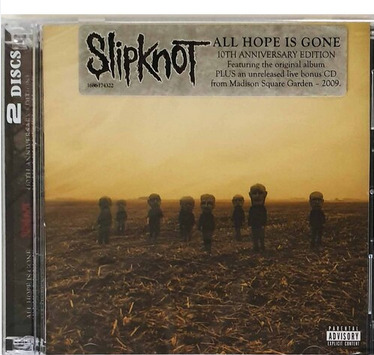
Understanding the Importance of Quality Preservation
When converting CDs to digital formats, the primary concern is often around the quality of the audio. Unlike streaming services that may compress audio files and potentially reduce quality, converting your CDs using the right techniques can preserve the original sound as closely as possible. The key is to choose the right format and settings for your digital files. Formats such as FLAC (Free Lossless Audio Codec) or WAV (Waveform Audio File Format) are favored for their capability to retain the full fidelity of the audio. This means that listeners can enjoy their music as it was intended, free from the artifacts of compression that can detract from the listening experience.
Additionally, one must consider the equipment used during the conversion process. High-quality CD drives and audio interfaces can make a significant difference. Investing in a good external CD drive, for instance, can ensure that the data is read accurately from the disc, minimizing the likelihood of errors that could affect the final product.
Choosing the Right Software
The choice of software plays a crucial role in maintaining audio quality. There are numerous programs available, ranging from free options to premium software that offer advanced features. Programs like Exact Audio Copy (EAC) and dBpoweramp are well-regarded in the audiophile community for their ability to rip CDs accurately while correcting for any errors that might occur during the ripping process.
EAC, for example, employs a method called secure ripping. This process involves reading the data multiple times to ensure accuracy, which is particularly important for older CDs that might have scratches or other imperfections. By using such software, users can significantly reduce the risk of losing audio quality, ensuring that each track is converted with the utmost fidelity.
Optimal Settings for Conversion
Once you have selected the appropriate software, the next step is to configure the optimal settings for conversion. While it may be tempting to simply choose the highest bitrate available, this is not always the best approach. A bitrate of 1,411 kbps is standard for CD audio, and using a lossless format will retain this quality. When using lossy formats like MP3, it is recommended to use a bitrate of at least 256 kbps to ensure that the audio remains as close to the original as possible.
Furthermore, it is essential to pay attention to the sample rate. CDs use a sample rate of 44.1 kHz, so maintaining this rate during conversion is critical for preserving audio quality. Ensuring that your software is set to the correct sample rate and bitrate will help achieve the best possible results.
The Conversion Process
With the right tools and settings in place, the actual conversion process can begin. First, insert the CD into your CD drive and open your chosen software. Once the software recognizes the disc, you can select the tracks you wish to convert. It is advisable to convert the entire album in one go, as this maintains the continuity of the music and can simplify organization later on.
After selecting the tracks, initiate the ripping process. This may take some time depending on the length of the album and the speed of your CD drive. During this time, it is advisable to avoid using your computer for other intensive tasks, as this can affect the accuracy of the conversion. Once the software completes the ripping process, it will usually provide a summary of the action taken, including any errors encountered during the process.
Organizing Your Digital Library
After successfully converting your CDs to digital format, the next step is organizing your new digital library. Proper organization will allow for easy access and enjoyment of your music. This can include renaming files in a consistent manner, such as using artist name and album title, and ensuring that metadata is correctly tagged. Metadata typically includes information like the track title, artist, album name, and genre, and it is vital for searching and sorting your music efficiently.
Many media players and libraries, such as iTunes and VLC, allow for easy management of your digital music collection. Utilizing playlists and grouping songs by artist or genre can enhance your listening experience, making it straightforward to find your favorite tracks.
Conclusion
Converting your CDs to digital without losing quality is achievable with the right knowledge and tools. By understanding the importance of quality preservation, selecting appropriate software, configuring optimal settings, and organizing your digital library, you can enjoy your music collection in a convenient format without compromising on sound fidelity.
For those looking to capture and preserve their musical memories in the best possible way, Rerun Records & Photography offers professional assistance. Through their expertise, they can help ensure that your music collection is converted and archived with the utmost care, allowing you to enjoy your favorite tunes for years to come.
2 notes
·
View notes
Audio
Gershon Kingsley, Cruel Creator "Pop Corn" ("Life of the Popcorn" remix) Music to Moog By (1969, 1996) Audio Fidelity Records
#music#tracked music#module music#Gershon Kingsley#Pop Corn#Music to Moog By#1969#Audio Fidelity Records#synth-pop#remix#FastTracker II#XM#Cruel Creator#Life of the Popcorn#1996#TT9 Compo#???#ambient music
1 note
·
View note
Note
Do you have any hobbies other than Cats? That's all you talk about lol
A valid question Anon, but this is my CATS blog after all.
I had a short lived music blog that was meant to be a sort of listening journal during the pandemic, but that stopped once I was told by someone that nobody cared.
That being said, I do occasionally mention that I am a record collector. I started buying vinyl in 2008, meaning that I have been collecting for more than half my life, which is interesting to note. Record collecting was (and still can be considered) my main hobby, but at this point it may be tied with CATS. I have over 3000 items in my collection, with quite a few rarer and valuable pieces, which is coincidentally much like my CATS collection :).
If you wanted a recommendation, a great one for Valentine's Day to boot (in my opinion), I just finished listening to Ernest Ansermet conducting the Orchestra Of The Royal Opera House, Covent Garden for the The Royal Ballet Gala Performances, a tremendous piece of Romantic classical music released in 1959. My copy is a 5LP boxset cut at 45 rpm for the best audio fidelity (and it does sound fantastic) that was initially reissued in 2019, but was out of print for years until they finally repressed it last year. It has recordings of pieces from ballets such as Swan Lake, The Nutcracker, Coppélia, and more.
#Music has always been my main passion in life#And I am so far behind or not knowledgeable in basically any other media like TV or movies#The White Cat Speaks
11 notes
·
View notes
Text
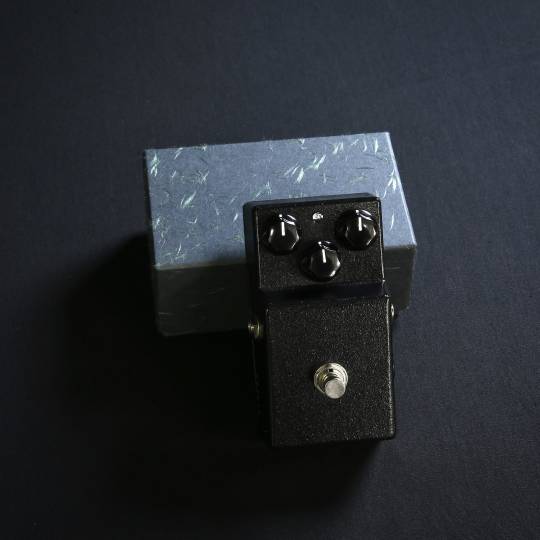



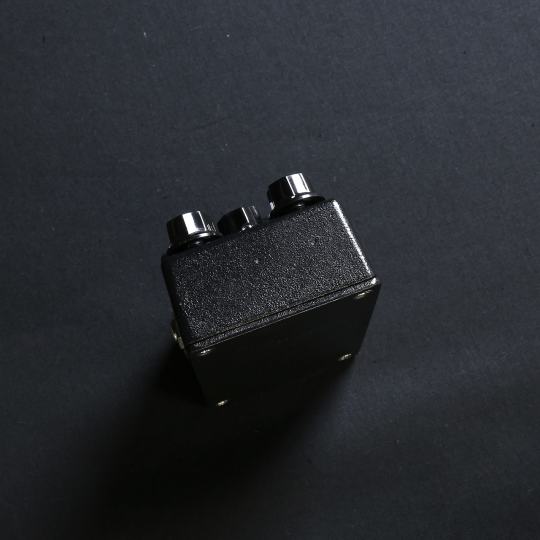
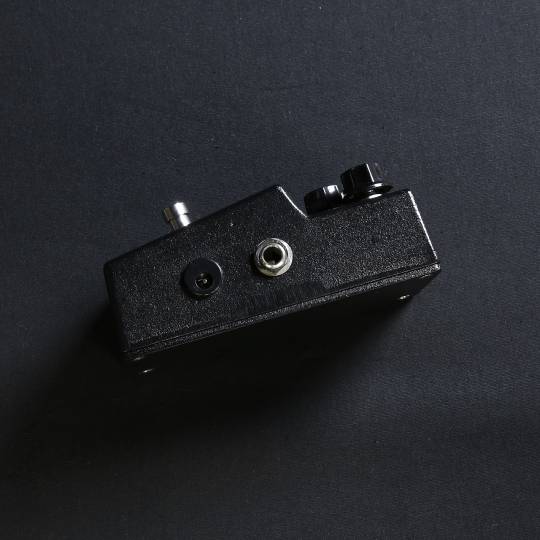
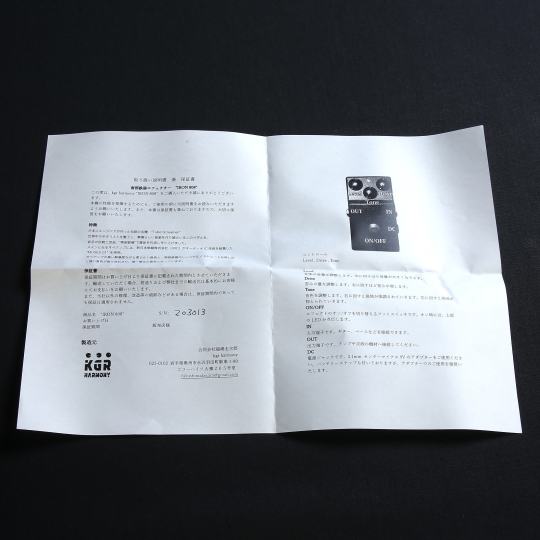

KGR Harmony Iron 808
"Nambu ironware or nambu tekki in Japanese is a form of metalwork produced in the city of Morioka in Iwate prefecture. It is a traditional handicraft that was first created in the middle of the Edo period (1603-1868). Each KGR Harmony Nambu Tekki enclosure is manufactured in the Oitomi foundry, established in Iwate in 1848.
The Iron 808 is the third effect in a series being produced by Nanbu Tekki! The tube screamer, a veritable masterpiece used on countless recordings and reproduced by hundreds of effects makers over the years has now taken on a new form. In a genuine nanbu tekki housing, the main opamp is the MUSES 01, a collection of audio IC technologies by New Japan Radio Co., Ltd. (JRC). The circuit removes the in / out buffer, making it more natural sounding with higher solution. The essential sound of the original 808 is all there but with better fidelity across a wider spectrum. Coupled with the hand made, bullet proof enclosure and you have world-beating 808 that will last a lifetime! ... Specifications: Controls: Volume, Gain, Tone Size: Length 118mm, Width 64mm, Height 56mm Weight About 670g Power Supply: Center minus 9V adapter (2.1mm) or 9V battery"
cred: reverb.com/Mion Instruments, kogeijapan.com
12 notes
·
View notes
Text
Ramones: Road To Ruin (1978)









2024 Rhino High Fidelity
- 180-Gram Vinyl
- Cut From Original Analog Master Tapes by Kevin Gray at Cohearent Audio
- Pressed at Optimal Media
- Heavyweight Gatefold Jacket
- Includes Exclusive Insert With Notes by Ed Stasium
- Limited Numbered Edition of 5,000
Sire Records
#my vinyl playlist#ramones#joey ramone#johnny ramone#dee dee ramone#marky ramone#tommy ramone#sire records#rhino high fidelity#punk rock#punk#pop punk#70’s rock#album cover#album art#vinyl records#record cover
3 notes
·
View notes
Text
Audio Demi-gods and Hi-Fi.
At least one personality I check out does not like the term Audiophile. There is a definite sneer to his use of that word. He uses Hi-Fi often.
I like that term. High Fidelity means exactly that. A high degree of accuracy and precision in reproducing music signals. It avoids the conceit of being an audiophile as well as reduces the weight of opinion. Another way to think about that is it is for the "testing people".
The idea of accuracy is codified by low distortion and noise, not by liking the sound. It was that the early designers were pursuing. Not a particular voice. The voice was on the recording.
In the 1950s to 1970s the hobby was about Hi-Fi.
The early designers of Hi-Fi audio equipment were legends. They mentored a second generation that climbed even higher. But as things developed low test figures were relatively easy to get under lab conditions. Things got more complicated.
David Hafler founded the Dynaco and the Hafler brands. He designed the Tube amplifiers that still influence the hobby today by their relatively huge numbers out in the wild. Later he hired some of the second generation of brilliant designers for doing transistor designs.
Stewart Hegeman worked for many companies including Dynaco and Harman Kardon and was the designer of the still coveted Citation tube amps. He also designed speakers and tuners. His Citation II tube amp is probably the best classic (late 1950s) vacuum tube design out in the wild.
William Zane Johnson was Audio Research. He kept the Vacuum tube banner flying after it was abandoned by everyone else. His SP3 series preamps were the state of the art in the 1970s. His D76 amplifier series sealed his place in audio Olympus. He preferred the results, the voice, he got with tubes though as FET ideas became better he drifted.
Arguably it was WZJ who nurtured the culture of the audiophile. He got the hi-fi test numbers, but many people just preferred the sound he got. (Include me there)
Those guys were the big names.
The second generation was evolving. Bob Carver invented BIG transistor amps with Phase Linear by using gangs of the biggest transistors he could find. He was originally a numbers guy. Later he proved he could make one of his not expensive transistor amps sound exactly like an expensive high end amp by fiddling with components to create a voice.
James Bongiorno left his mark on the Dynaco 400, the big SAE amps, the Ampzilla, and several other products that had in common big power and amazing fidelity. Great numbers.
Nelson Pass worked for several companies and left a trail of products that some people buy just because he had a hand in it. He is still kicking around in the mountains of California doing interesting things with transistors. He became a champion of good distortion. If you like it, it is good. Numbers don't matter.
I think this maps a migration of taste from being accurate to having a voice you prefer. In the same way the job of reviewers drifted from running tests on a piece to listening and judging. Publications were founded specifically because of that. Stereophile was founded by J Gordon Holt for exactly that reason. Later "The Absolute Sound" was founded by Harry Pearson because he felt JGH was compromised by the need to advertise in his magazine. Opinions became paramount.
I do not want to simplify the Hi-Fi problem too much. Lab tests can show two devices give exactly the same results. Those two devices can then sound different. One side of the argument says this proves tests mean nothing. The other rightly claim the conditions are different. Once you know it is good choose by preference.
I am an engineer. I gotta know why.
I own two radically different amplifiers. One is a high power full complementary symmetry transistor amplifier with global negative feedback designed in the early 1970s and modified a bit. The other is a legitimate high end medium power ARC Tube amplifier with FETs and power vacuum tubes running as triodes. It too has negative feedback. It is absolutely stock. (Well except for some test point access)
They are both high end, and high fidelity. They actually sound similar in the most general sense. They are pretty accurate. But they also have subtle differences in voice and textures. I go on and on about the differences, I seldom emphasize how small these things are. That is because, yes I am an audiophile and I notice this stuff.
Audiophiles can get fooled by trickery and salesmanship. So it is not an extension or a refinement of Hi-Fi. It is not better than Hi-Fi. It is a different perspective. If it tests bad it is bad.
What was I actually trying to say?
PS***
I should note that obviously I am talking about the North American Hi-Fi world. That is what I know. Very few products came across that ocean. In the old days. Those I know about are from the UK. Quad speakers, and electronics. SME tone arms. Some turntables. Oh and that DECCA phono cartridge. All were niche items. Oh and very good.
2 notes
·
View notes